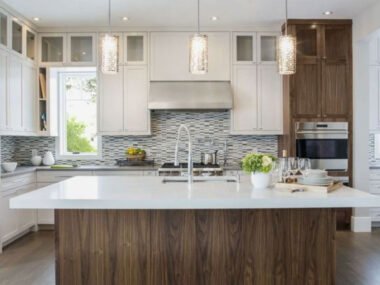Automation, once the preserve of industrial landscapes and science fiction imaginings, has infiltrated the domestic sphere with confident aplomb. The electrifying promise of technology now pulses through residential design, causing spaces to adapt, environments to respond, and blurring the boundaries between home and machine. Yet this change is not mere embellishment; rather, it signals a profound reorientation in how we inhabit, understand, and construct the notion of ‘home’ itself. What lies at stake are not only matters of convenience or efficiency but the very texture of daily life, as human intuition begins to interlock, sometimes uneasily, with algorithmic precision. Thus unfolds the story of automation’s quiet, relentless transformation of modern living.
Seamless Integration of Technology
Contemporary homes increasingly manifest their intelligence through subtle, sophisticated systems. Consider the widespread adoption of electric window openers; these devices do more than simply facilitate ventilation at the touch of a button. Instead, they subtly integrate programmability and environmental responsiveness into the building’s fundamental structure. Windows now open in accordance with air quality, weather patterns or even precise occupancy schedules, enfolding the resident in a dance of light and air choreographed by unseen algorithms. In such a design, the distinction between static architecture and a dynamic system grows increasingly faint, recasting the home as both a sanctuary and a responsive instrument.
Reconceptualising Space and Function
As automation infiltrates domestic architecture, rooms are liberated from the tyranny of single-purpose designation. Walls, lighting, and furnishings adapt to changing needs; a digital assistant subtly transforms breakfast nooks into study alcoves. The spatial choreography made possible by embedded sensors and interconnected systems dislodges conventional notions of permanence, inviting inhabitants to reimagine their relationships with space. The house morphs from a mute shell into a living organism, perpetually tuned to its owner’s routines, preferences, and desires, ultimately fostering a more adaptive and deeply personalised environment.
Elevating Sustainability to a Systemic Principle
The promise of automation stretches far beyond personal comfort; it interlaces sustainability into the fabric of everyday life. Automated shading, intelligent climate control, and water management systems move beyond token green gestures and recalibrate resource use according to need and external conditions with astonishing efficiency. The result? Homes that learn, economise, and optimise in real time, making judicious decisions that reverberate across energy grids and water tables. Through such systematic orchestration, automation transforms ecological stewardship from an afterthought into a beautifully choreographed foundational principle.
Challenges and Unintended Consequences
Yet the accelerating march of automation is not without its shadows. Privacy concerns bristle as ever more intimate details of domestic life become fodder for algorithmic scrutiny. Dependence on connectivity exposes new vulnerabilities, whether to a technical glitch or a malicious incursion. Even the purported ease afforded by automation may erode essential human skills, inviting a subtle and insidious complacency. Therefore, both designers and residents need to strike a balance between empowerment and surrender, ensuring that progress doesn’t undermine autonomy or resilience in the quest for effortless living.
Conclusion
In surveying the new horizons of residential design, one cannot ignore the gravity of the shift underway. Automation is not merely augmenting our homes but fundamentally rewiring the relationship between human intent and the built environment. The future home is not just smarter; it is more aware, responsive, and alive to the patterns of its inhabitants and the world. Yet, if we are to master this transformation rather than become its unwitting subjects, we must approach design not simply as a matter of technical deployment, but as an intricate negotiation of agency, privacy, and meaning within the automated embrace.










